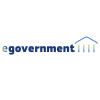The Style Guide for Corporate Websites for Ministries is the key to develop a common web policy for Dutch central government. Its aim is to harmonize the presentation of the ministries on the internet. The Web Style Guide provides obligatory guidelines, conventions and ‘best practice’ advices. Included are a mandatory navigation model, shared semantics (e.g. Dublin Core metadata), a visual design and more. Accessibility and quality of site construction are guaranteed because the Dutch quality model named ‘Web Guidelines’ are fully integrated in the Style Guide. Benefits of the Style Guide are a greatly improved user-experience, much lower implementation costs and better web communication overall.
Policy Context
In the Netherlands: - action-plan 'Andere Overheid' (transfiguring Government Action plan of the Dutch Cabinet) - SURC - Samenwerking in Uitvoering Rijksbrede Communicatie (Co-operation in executing central government-wide communication) - 'One logo' initiative: Dutch Government is working on a 'one logo' strategy for corporate communication. The Style Guide is seen as a predecessor of this initiative - the Style Guide expands the ongoing discussions about accessibility of websites. It broadens the discussion ranging from technical viewpoints to web-content and usability. It raises awareness about the necessity of overall high quality web communication, and it combines forces on all the areas of expertise In the EU: - eInclusion and eAccessibility (website accessibility objective, Riga ministerial declaration, June 2006).
Description of target users and groups
The direct and main targetgroup of the Web Style Guide are all visitors of the corporate websites of Dutch central government: citizens and professionals, business as well as administrative users and intermediairies. Second target group are the communication professionals and commissioners in central government; these people make it happen on the webs of government, and the Style Guide gives them a united tool to do it right. Third target group are all contractors involved in the process of building and maintaining the websites. In short: all users and everyone involved in building these websites and contributing to the contents.
Description of the way to implement the initiative
The approach by high level management was to acknowledge and foster the initiative by a small group of website professionals form several ministries. Two of the most important choices that were made: -The working group didn't try to establish a common technical infrastructure. The alignment would have taken several years and without a doubt would have been very costly. For the goal to create a common look and feel it was not necessary. - The working group didn't want to make the visualisation of the website (the 'looks') mandatory, since it was expected that this would cause a lot of resistance at high level. Instead, a base visualisation was made, to be used as a reference. As a result, all ministries except one based their website on the base visualisation. - A separate working group with experts from all ministries, created a shared semantic model, based on the Dublin Core metadata standard, to be used on all websites.
Technology solution
Websites built according to the Style Guide are ready for use with various kinds of media types: handheld (PDA, Blackberry, smartphone), braille, aural (speech), television, print, and (high resolution) screen. Also these websites are ready for all possible variations of content syndication, because the underlying model facilitates the re-use of content.
Main results, benefits and impacts
At the moment a growing number of websites from ministerial departments, services and projects use the Style Guide or parts of the Style Guide for their new websites. In all cases, the impact is sustainable. Novelties: - a vast co-operation between all 13 Dutch ministries in web-management - combined guidelines, used by all, made by all - application of a quality model, based on international conventions, accessibility guidelines and standards compliance. - application of a semantic model, based on the Dublin Core standard, that is used government-wide.
Return on investment
Return on investment: Not applicable / Not availableTrack record of sharing
At the moment several more websites from ministerial services and projects are using the Style Guide in projects for their new websites. Also Style Guides are being developed for the Dutch water board, municipalities and for web applications.
Lessons learnt
Lesson 1 - A grass-roots, joined effort to find common ground can produce significant result in a relatively short period of time. Lesson 2 - Developing accessible, usable, standards compliant, well-designed and easy to maintain websites need not be more complicated or more expensive than the 'old way', but the revenue is higher Lesson 3 - Through co-operation and sharing knowledge, the quality of web communication increased substantially.
Scope: National
